How does who you are connect to how you communicate science?
The story of an identity workshop
Today’s blog post is brought to you by Clare Boon, PhD student, and Emma Gill, Master of Science Communication student. Clare is researching queer science communication and Emma is researching values in inclusive science communication. We designed and held a drop-in workshop at the Australian Science Communicators WA: Communicate to Inspire conference earlier this year. Here’s our story… from how we got here, to why we did this, to how it went… according to those who came!
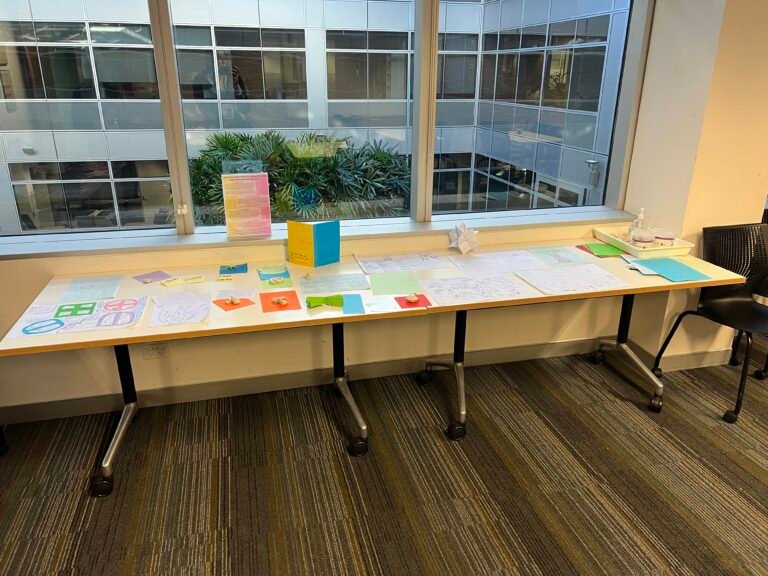
Who we are shapes what we do, and the choices we make about how and why we do it.
It’s the COVID-19 era of uni study—that is, all online.
It was a weird time to be a new graduate. I was looking for something fulfilling to do with my time with my new Honours degree in psychology and a dwindling job market when I saw an ad for the Masters of Science Communication at UWA. I didn’t even think about it. The next day I had applied to the program and that was it. It was love at first Zoom class. Science has always been a part of my life, so getting to talk about how we talk about it was basically a dream come true for my nerdy heart.
But while discussing who had been included and excluded in science and the way science communication tried to bring them into the conversation, I saw part of my own group left out of the conversation. There was no consideration for queer people. So, I approached Heather [the discipline chair] with a plan to research queer people in science communication. And I haven’t stopped since.
Now, 5 years on from that first ad, I have my Masters and I’m busy working on a PhD thesis that will hopefully invite queer people to the conversation in a way I wasn’t when I started out. Because as it turns out, being queer in science communication is easy, but it’s also really hard. And it’s so important to acknowledge that.
I’m a former marine biologist, early childhood educator, high school science teacher, volunteer science communicator, and now a communications officer for a research centre. I’m a mum of two primary-age kids, a dual national of the UK and Australia (aka a settler), a fiction writer, and neurodiverse. It’s a lot, but that’s also a pretty good summary of me (because I’m a mature age student. Apparently, I’ve lived…).
I started my Masters interested in evaluating the inclusivity of citizen science, because I think science should be for everyone. I learned a lot doing the coursework elements of my degree, and whilst citizen science isn’t my sole interest anymore, still, the inclusion aspect has stayed with me. When it came time to choose a research topic, I wanted to know how I could contribute to inclusive science communication (ISC) in Australia. So I set out to find my community. Which was hard. Turns out, we don’t talk about ourselves a lot – or at least, not in the spaces I had access to.
So my research has been about talking to people who do ISC and asking them what they value, so that we can shine a light on this aspect of science communication and maybe more easily recognise each other, learn, and grow together. A big part of that is about not only knowing who I am as a researcher and person in ISC, but also using feminist standpoint theory to recognise, accept, and value the positions of others.
In a twist of fate, we have both dived into inclusive science communication research, looking at the impact of identity on our own research and practice. This has led to a lot of time and energy spent reflecting on our own identities and positionalities as well as wondering about other people’s, trying to unravel the mystery that is ‘identity.’ And we think identity impacts every facet of life. We can’t separate ourselves from it, no matter how hard science sometimes wishes it could. It walks with us hand in hand in everything we do.
So it should come as no surprise that our identities impact our lives as science communicators. Science communicators are as diverse as our professional contexts, with intersectional, complex identities which inform our beliefs, attitudes, values—and how these connect to our work.
We think it is important to regularly reflect on and share these positionalities to promote and strengthen community connection, understand current practices, learn from each other, and transform our field to be more inclusive and equitable by engaging with all peoples in science to meet their needs.
Collaborating on a workshop was the inevitable ‘next step’
Having immersed ourselves in the world of inclusive science communication, and having done our own research into the ways our identities impact us, we knew it was reflective work that not many people in science communication do in their day-to-day.
Communicate to Inspire is the Australian Science Communicators (ASC) WA branch one-day conference, the only one of its kind by a branch of ASC in Australia. Last year, the annual ASC conference was held at UWA in Perth, so we didn’t have a Comm2Inspire, but this year they were back and better than ever! When the call came out for workshop proposals, we saw this as our opportunity.
What if we ran a workshop on positionality, applying our research knowledge and passion for identity and inclusion in a ‘sheltered space’* at the conference?
Comm2Inspire allowed us to experiment with a first-of-its-kind for this conference: an open-ended activity for attendees to explore their identity and positionality with us. We hoped that facilitating discussion about the importance of considering identity and its impact on science communication would allow for a richer and deeper understanding of how we do things in our field, and the biases and perspectives we bring to our work as science communicators.
Our aim was to start conversations. And to do this in a creative, relaxed way in the kind of space we would like to do such reflection in. Mostly, we wanted to talk about positionality and share our research passions with more than just the two of us and our supervisors!
*(Thanks to Simon Lock for the terminology.)

Having never been to a positionality workshop ourselves, we had to ask: what could this even look like?
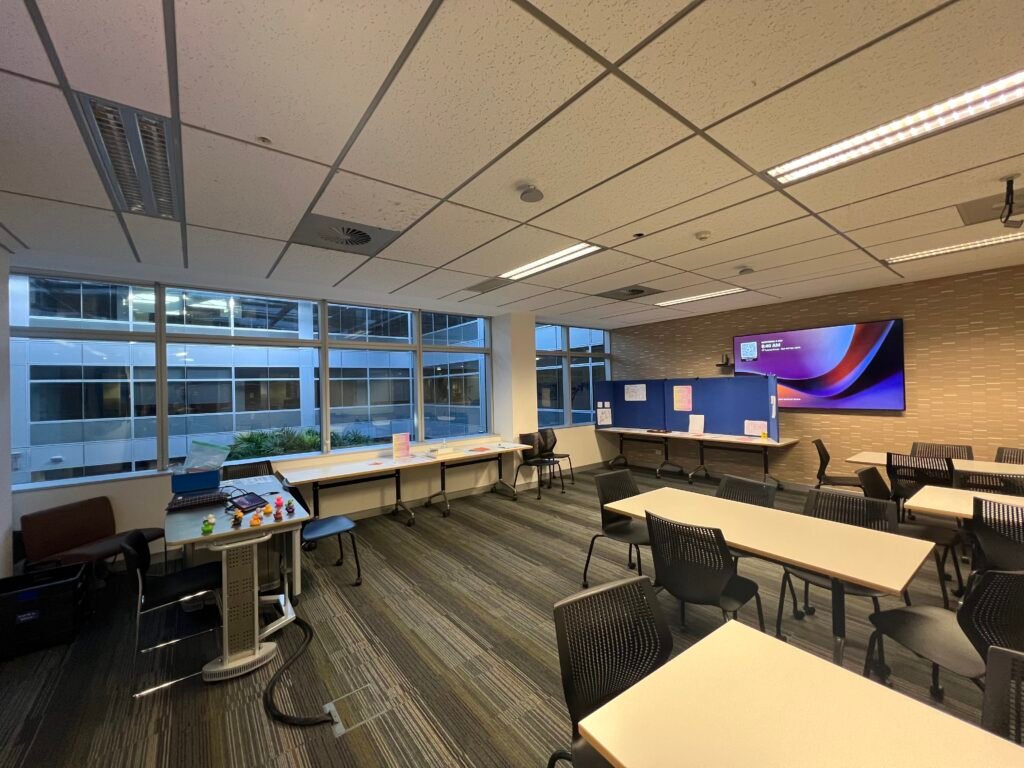
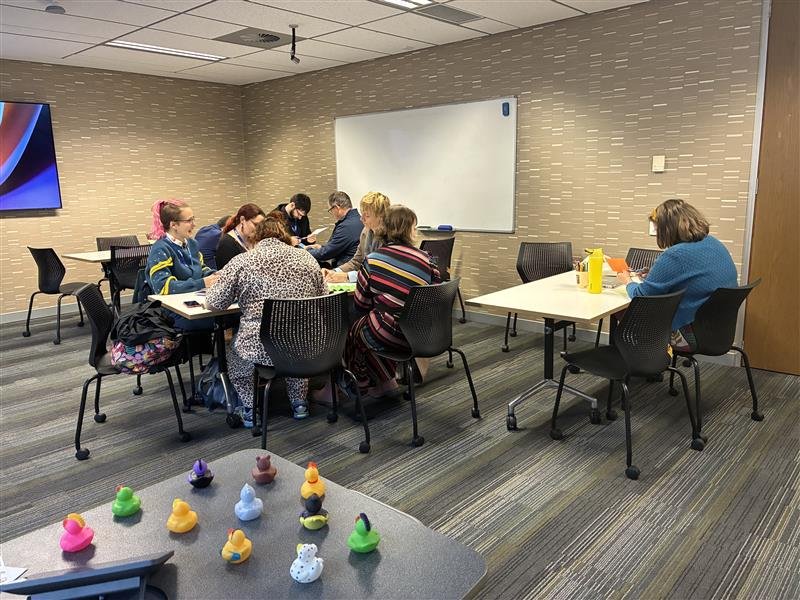
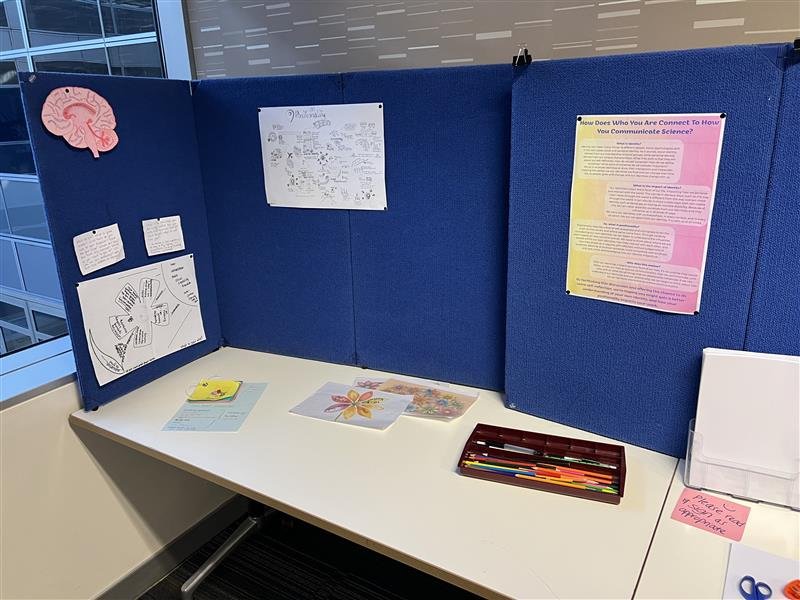
For Comm2Inspire we decided on a drop-in style space near the ‘Quiet Room’ of the conference, a place where attendees could visit throughout the day. Identity is something we carry with us at all times, so it was important to us to have the space available throughout the day to offer flexibility for people to come in their own time when they were comfortable, and to promote open engagement on this topic.
We provided open-ended materials to explore reflections imaginatively – including coloured and white paper of different sizes, pens, colouring pencils, string, scissors, glue, and even clay (which didn’t end up as messy as we had thought it would!).
Attendees were encouraged to produce their own interpretation of their identity. We hoped to create a display by the end of the day that represented the identities of conference attendees in ways that were meaningful, individual, collected, authentic, and creative. It was always intended as an opening of a conversation that we hope to continue.
The culture of science communication is heavily influenced by the culture of science, which upholds the ideal of objectivity. However, science is also a process carried out by people (as is science communication), meaning it can never be truly objective.
The influence of our humanity is always present.
In part, this comes from our positionality, which is influenced by our identity. We wanted to contrast this with art, an acknowledged subjective area that encourages the influence of the self to bleed through in obvious and clear ways.
Bringing art (the subjective) into this place of science communication highlights the way that, although we strive for objectivity, the subjective is not something to shy away from. Instead, we should be acknowledging it, sharing it, and opening dialogue with it to better understand how we engage in our own practice and the ways we’re unconsciously feeding into this narrative of leaving the self out of practice.
The reality.

We weren’t there. Well, we weren’t there for the first half of the day – because we were being very busy in another session on a panel about our experiences at the 2025 Public Communication of Science and Technology Conference. Fellow scicomm Masters student, the wonderful Hannah Archer, facilitated for us in our absence, but we recognise it wasn’t her workshop, so we feel bad for missing out on the morning session.
We were quite ambitious to suggest that we run it for the whole day, and this turned out not to be possible with the way the day ran. Practical considerations led us to instead provide two sessions: one in the morning and one in the afternoon. (Perhaps this was a good reminder that we don’t need to be – or provide – everything, everywhere, all at once!)
Other cons came from our attendees’ feedback, which we gathered on the day and also via a survey emailed out afterwards. Up to 40% of our 10 survey respondents said they were unsure of what they were doing, and at least 20% of people felt that we, as facilitators, did not offer enough support. That might seem like only a few people weren’t sure about the activity… but when every person is important, which we believe, that’s not good enough. We’ve been sitting with that, and we’re sharing it because it’s important to own up to when things don’t go as planned, and learn, and improve for next time.
On the other hand, 100% of our surveyed attendees said they would attend a workshop like it again. So maybe the ‘unsureness’ about what they were doing was because they hadn’t done an activity like it before. To capture that, our survey questions might have needed to be different.
Now the self-stabby bit is over with, let’s talk about the good things!
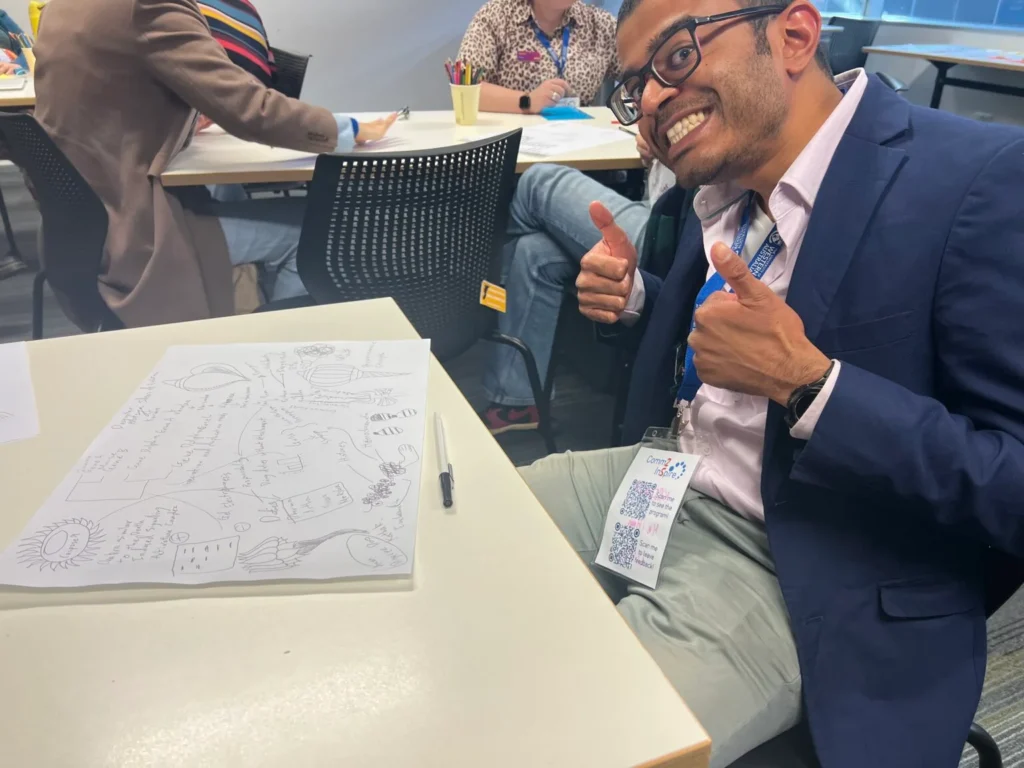
Almost a third of all conference attendees came to our workshop and engaged in our activity. Yay! It was lovely to see people were open to learning something new and having a go, even when it wasn’t something they were used to – and was perhaps not what they were expecting to experience at the conference. Attendees described the experience positively, and the atmosphere was very relaxed and open. And, happily for us, there is continued interest in more workshops just like this one!
People who came to the workshop came because they wanted to (having seen it on the programme) or were personally invited to by us on the day, not because it was a drop-in event. Whether this meant that the location (being out of the way near the quiet room) meant that we were less visible to inspire more attendees, or because participation itself was so individually interest-led, we aren’t sure – but it does suggest future workshops need to be communicated about by us rather than being left to chance. We also found it interesting (and are very grateful!) that everyone left us their creations to be shared, suggesting that everyone felt safe enough in our hands as facilitators to handle their identity and positionality with respect and care.
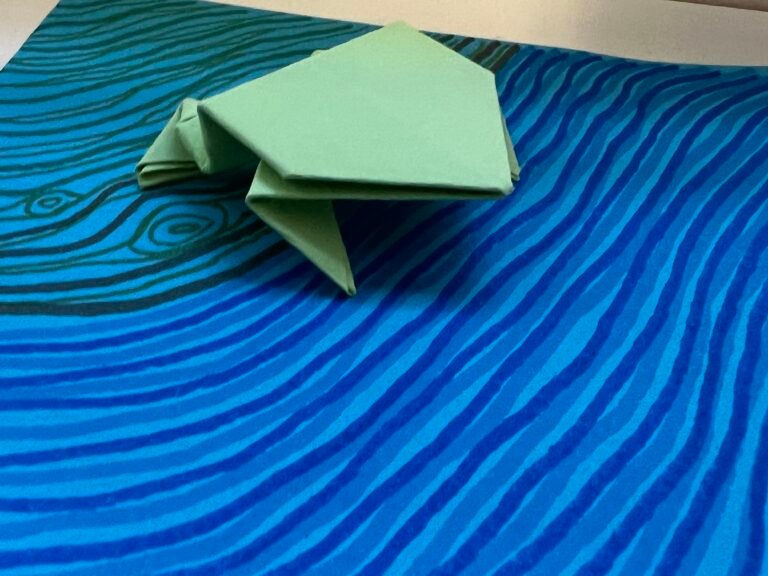
“I thought my part of the day went well. The workshop was very inviting, especially as a space where people could come in to collect their thoughts and get creative. Everyone who participated had different reactions and approaches to the activity. Some were enthusiastic about self-reflecting, while others found it a bit more difficult or challenging. There were some group discussions about what people did to communicate science, and how they’d started/gotten to that point. But it mostly worked out as an individual, contemplative exercise. It looked like the explainer materials provided, and Emma and Clare’s example pieces provided helpful direction and inspiration – everyone started by reading through them and asking questions. The end results were really unique and creative as people explored the connections between their self-identity and science communication, and made them visual and tactile.”
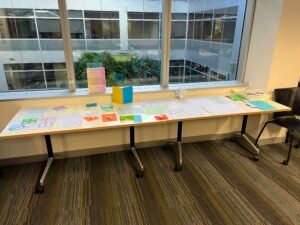
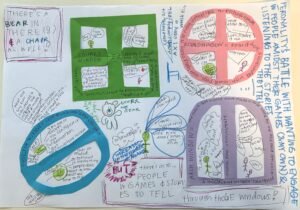
Overall, we thought the workshop was a success. We put in the work and were happily surprised by how successful it ended up being! It was lovely to get the validation that what we do is interesting, useful and important for other scicommers in our community. Running this workshop somewhere familiar, with an organisation we are familiar with, made it easier to go out on a limb and try something new. Multiple timeslots ended up working better than the drop-in sessions we originally intended for this workshop, which shows how collaboration with event organisers can make an event even better! Our attendees produced such a wide variety of responses to our invitation on reflection and real engagement, creativity, authenticity and care were put into their creations.
Unsurprisingly, running a workshop like this takes time, not just on the day, but in the lead up as well. We embedded our own reflections and care, trying to bring that to the workshop as its facilitators to create a sheltered space where participants felt comfortable enough to be vulnerable and engage in critical self-reflection. It was time-consuming, but worthwhile!
Our plans… and your chance to join in
If you (or someone you know) wants to run a workshop like this one, we’d suggest a few tweaks.
Firstly, be present to open the space and explain the workshop, including information on positionality, before you bring out the art materials!
Secondly, there should be something attendees can take home so they can continue to do this work in their own time. We’re not saying everyone likes homework, but exploring your identity is an ongoing and continuous journey that usually requires a bit more work than a single workshop during a conference.
In terms of what’s next for us?
We’re hoping to run another workshop with everything we’ve learnt from this one and continue talking about positionality with our community. We’re looking forward to seeing you there!
Why not have a go at some self-reflection yourself? All you need is a space where you feel comfortable being a little uncomfortable (think of a favourite thinking spot or place where you might do some journalling). You can use whatever materials you have: be as creative as you like with mixed media, or use words to frame your thoughts. Think about who you are and what makes you, you. What is your background, your identity, and what are your values, beliefs, and attitudes? What influences you and the way you think and act? Why? How does all this connect with what you choose to do at work?
Whatever you do for your science communication, your identity is part of it. Take the time to map it out. Let it unfold. It’s amazing what you can discover! Even better, do it with some friends or colleagues. Set yourselves a time limit and, if you want to, discuss what you found out.
Feel free to download our workshop poster for more information on identity, positionality, and why we think it’s important for science communicators to know theirs.
It’s never too early–or too late–to start reflecting. Good luck.
We’d love to see your results. Tag us on Instagram @thescicommcollective or post in the replies on this page.
These artworks were created at the workshop on identity. Permission has been granted for us to share them publicly and anonymously. We ask that you do not onshare in any manner or form that could be deemed disrespectful or derivative of these personal reflections.
Thank you to all our attendees.
Here are some useful resources for self-directed identity reflection
Reflexivity workbook
Reflexivity: A tool for inclusive science communication (López & Feliú Mójer, 2025)
“[This] is a workbook for individuals who are interested in or already doing science communication, public engagement with science, and more broadly, civic science, and want to make their efforts more equitable and inclusive… While reflexivity can be practiced in groups, as teams or organizations, the exercises contained here are designed to help individuals practice reflexivity. The overarching goal of this workbook is to provide you with a place to start or enhance your reflexivity practice.”
RETHINK #scicomm project
Six virtues for the reflective science communication practitioner (Roedema et al. 2021)
“We have seen in our research that practitioners’ worldview, values, perspective on science and assumptions on audience influence the way in which practitioners undertake science communication activities. This means that it is important for practitioners to rethink and reflect on the perspectives they take on science, their audience, and consequently the activities they undertake to bridge the gap between science and society. These insights have motivated the RETHINK project to facilitate a reflective practice for science communicators.”
SPARQtools by Stanford University
areyoureadytotalk | SPARQtools
“Are you a person who wants to have or lead a conversation about different identities, experiences, or viewpoints? We know conversations about how we differ can be stressful. These four brief activities prepare you to discuss differences. The result? The ability not only to explore differences with people in your own life, but also to facilitate conversations among others and lead future activities.”
Positionality Reflection Tool
A Positionality Tool to Support Ethical Research and Inclusion in the Participatory Sciences (Cooper et al. 2024)
“Scientific research is shaped by researchers’ values, consciously or not, influencing topic selection, methodology, data interpretation, and error handling. Sharing your perspective or bias—”positionality”—helps manage personal influence by acknowledging how life experience and social background affect research. In community-based and participatory research, recognising positionality is crucial for maintaining integrity, ethics, and fairness. We recommend project leaders reflect on their identities and perspectives, using our simple review tool. This promotes awareness of personal influence, safeguards diverse voices, and enhances the inclusivity and impact of scientific work.”
If you’re interested in Inclusive Science Communication, we recommend these resources:
ISC-Starter-Kit.pdf (DiCenzo et al. 2021)
A Proposed Framework for Considering “Inclusive Science Communication” in Theory and Practice (CPAS Inclusive Science Communication Collective, 2025)
The YESTEM Project | FREE TOOLS FOR EQUITABLE + TRANSFORMATIVE STEM DESIGN IN INFORMAL ENVIRONMENTS (YESTEM group)
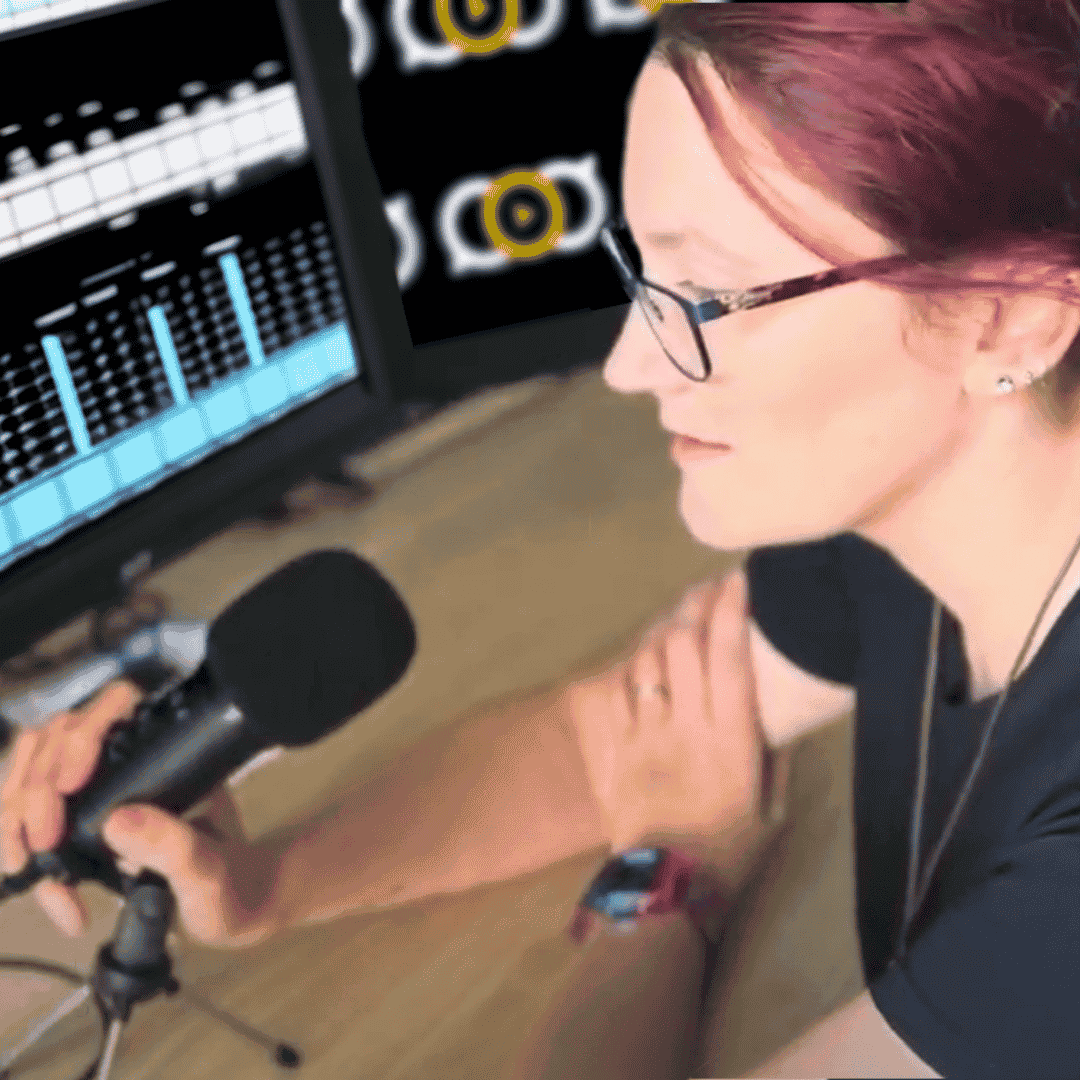
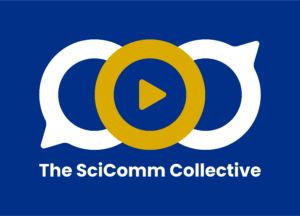
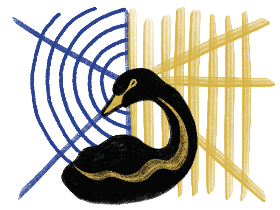
All opinions on this website are representative of individuals and are not representative of The University of Western Australia. The University of Western Australia is not liable for content herein.